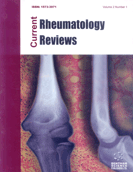Abstract
Objective: To assess the relationship between disease activity, measured by DAS28, and radiographic progression, using X-Ray and US as tools to evaluate structural joint damage and residual inflammation, in early RA patients.
Methods: Changes from baseline to week 52 in clinical variables and measures of radiographic progression were compared between early RA patients who received anti-TNF biologic therapy (192 patients), and those who received synthetic DMARD therapy (288 patients). Patients were stratified into: in remission, low (LDA), moderate (MDA) and high (HDA) disease activity at 52-weeks of treatment according to DAS-28 score. Radiographic progression was assessed both at baseline and at 52-weeks using modified Total Sharp Score (mTSS). In addition, US scores for number of erosions, synovial hypertrophy and vascularity were recorded.
Results: Whilst there was no significant radiologic progression in the patients who achieved remission, whether treated with synthetic DMARD or biologic therapy; on the other hand, there was a steady increase of joint damage in those who did not achieve remission, mainly in those treated with synthetic DMARD and in favor of the biologic therapy. On comparing the MSS scores at 52-weeks, the biologic therapy cohort who showed LDA (DAS-28: 2.6-3.1), MDA (DAS-28 score > 3.2-5.1) and HDA (>5.1) had significantly (p< 0.001) less number of erosions and joint space narrowing (P< 0.001) as well as US-GS and US-PD scores in comparison to the synthetic DMARD therapy cohort. X-Ray and US parameters showed a discriminating value regarding joint damage particularly in the patients who did not achieve remission, with US parameter showing accurate 95% CI estimate.
Conclusion: Using US as a sensitive tool for joint affection assessment, the combination of biologic and DMARDs therapies retards joint damage, independently of its effects on disease activity, contrasting synthetic DMARDs monotherapy.
Keywords: Early arthritis, joint damage, PROMs, rheumatoid arthritis, uncoupling, US.








